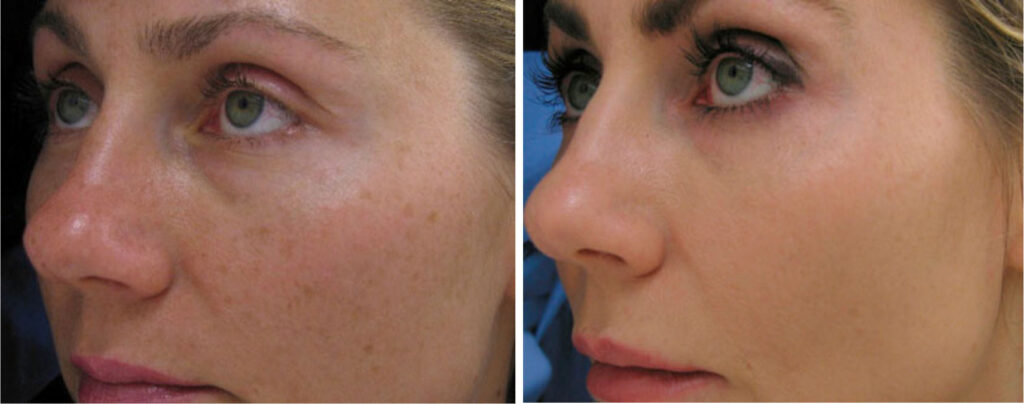
Laser Skin Resurfacing is an effective, nonsurgical treatment that helps reverse sun damage, reduce fine lines and lightens blemishes. This in-office laser face treatment uses laser beams of light and heat to address problem areas by gently removing damaged skin layers.
Dr. Clinton Webster, a board certified and skilled plastic surgeon in Oklahoma City, offers customized laser therapy for skin, selecting the right treatment based on each patient’s skin type and needs.
Our clinic uses advanced options – CO2 Fractional laser resurfacing, 570 and 1064 wavelength lasers, and Fraxel CO2.
After a thorough evaluation, Dr. Webster will recommend the most suitable laser face treatment and may suggest combining it with BOTOX or an injectable filler for optimal results.
Laser skin resurfacing removes the outer layer of skin and heats the underlying layer to stimulate growth of new collagen fibers. During this process, damaged skin cells on the outer layer are stripped away, leaving a new layer of healthy skin to grow. If small sections of the face are being addressed, the procedure will typically take about 45 minutes. A full-face treatment, or larger areas of skin, can take up to 2 hours. Multiple sessions are sometimes needed to attain the desired results.

Ablative deep laser resurfacing uses an intense laser beam to remove the outer layers of the skin, with a longer recovery period but more noticeable results.
Non-ablative laser therapy for skin does not remove any skin layers; it promotes collagen growth, tightening the underlying skin. This process offers a relatively easier recovery, with results not being immediate but appearing over the course of multiple appointments.
This ablative method removes the epidermis and part of the dermis to stimulate collagen growth, promoting new, healthy skin. For example: Sciton Laser Skin Resurfacing System, the UltraPulse CO2, and the Fraxel repair (Fractional CO2) lasers.
These advanced laser therapy for skin systems use short-pulse and continuous light beams to deliver customized results for each patient’s needs, making deep laser resurfacing an effective choice for rejuvenation.
Considered the gold standard among many practitioners is CO2 (carbon dioxide) laser resurfacing. This is an ablative method, which removes both the epidermis and some of the underlying dermis to promote collagen growth so new, healthy skin can thrive. Examples include the Sciton Laser Skin Resurfacing System, the UltraPulse CO2 and the Fraxel re:pair (fractional CO2) lasers. These are newer generation lasers that deliver short-pulse light energy as well as continuous light beams to produce customized results for each patient’s specific needs.
▶️ Mild swelling is normal after laser face treatment.
▶️ The treated area may crust and scale as it heals.
▶️ Red or pink skin tone may persist for several weeks.
▶️ Most can resume normal activities within a couple of weeks.
▶️ Sensitive skin or past reactions may lead to more side effects.
▶️Leaves the skin with a new, healthy but sensitive layer.
▶️Daily sunscreen use and limited sun exposure recommended for proper healing.
This procedure was created to improve the appearance of the skin. However, an inexperienced individual can damage the skin unintentionally. It is important to find a laser skin resurfacing professional who understands how the various laser technologies interact with different skin types. If done correctly, the results can be effective and long-lasting.
While laser skin resurfacing does not stop the aging process, the results can still be long-lasting. As patients continue to age, they may consider additional treatments like Botox or an injectable filler.
While one is not better than the other, they have varying degrees of intensity and recovery. Both techniques provide nice results. During your initial consultation, we will discuss which is best for you. Factors include the patient’s aesthetic goals, skin type and how much downtime can be tolerated.
Most patients report mild discomfort during the procedure, which can be managed with a topical anesthetic.
It’s usually recommended to avoid makeup until the skin has fully healed, typically 1-2 weeks post-treatment. Dr. Clinton Webster will provide specific guidance based on your healing progress.
Yes, laser skin resurfacing can be combined with other treatments like BOTOX or dermal fillers for enhanced results.